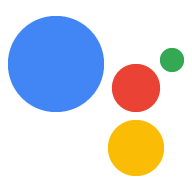Dữ liệu có cấu trúc cho Google biết về loại nội dung bạn đang tạo, vì vậy, chúng tôi có thể hiển thị dữ liệu đó cho người dùng theo cách tương tác. Ngoài việc trình bày nội dung của bạn dưới dạng kết quả nhiều định dạng trên Google Tìm kiếm, chúng tôi có thể đọc mã đánh dấu của bạn để tự động tạo một Hành động trình bày nội dung của bạn trên Trợ lý Google và tạo một mục nhập trong thư mục Trợ lý. Khi người dùng yêu cầu Trợ lý cung cấp một trong các loại nội dung có sẵn, chúng tôi có thể hiển thị Hành động của bạn.
Nếu bạn chỉ mới bắt đầu, hãy tìm hiểu thêm về cách thức hoạt động của dữ liệu có cấu trúc.

Xuất bản nội dung
Google có thể tạo nhiều Hành động dựa trên nội dung web mà bạn cung cấp. Hãy tham khảo danh sách các loại nội dung được hỗ trợ sau đây để tìm hiểu cách tạo Thao tác cho từng loại:
| Câu hỏi thường gặp | Những người dùng yêu cầu Trợ lý Google cung cấp thông tin về một chủ đề có thể nhận được nội dung Câu hỏi thường gặp của bạn để đưa ra câu trả lời phù hợp nhất cho họ. Tạo mã đánh dấu cho nội dung Câu hỏi thường gặp và chúng tôi có thể tự động tạo một Hành động có thông tin của bạn. Để biết thông tin về các Hành động liên quan đến câu hỏi thường gặp được tạo bằng mã đánh dấu, hãy xem tài liệu về Hành động liên quan đến câu hỏi thường gặp. |
| Nội dung đa phương tiện | Người dùng có thể khám phá nội dung của bạn trên Google Tìm kiếm và Trợ lý, đồng thời bắt đầu phát nội dung ngay trên ứng dụng hoặc nền tảng của bạn. Để biết thông tin về cách thiết lập nội dung đa phương tiện, hãy xem tài liệu về Hành động đối với nội dung đa phương tiện. |
| Tin tức | Người dùng có thể xem nội dung của bạn thông qua Trợ lý Google trong Google Tin tức, bao gồm cả băng chuyền tin bài hàng đầu. Khi bạn thêm dữ liệu có cấu trúc vào các trang AMP, chúng tôi có thể hiển thị nội dung tin tức của bạn trên Trợ lý Google. Để biết thông tin về cách thiết lập nội dung tin bài, hãy xem tài liệu về dữ liệu có cấu trúc bài viết. |
| Podcast |
Người dùng có thể tìm thấy podcast của bạn trong thư mục Trợ lý và phát các tập podcast trên thiết bị của họ bằng Trợ lý Google. Tạo một nguồn cấp dữ liệu RSS cho podcast của bạn và chúng tôi có thể tự động tạo một Hành động cho podcast đó. Để biết thêm thông tin về cách thiết lập nguồn cấp dữ liệu podcast, hãy xem tài liệu về Podcast. |

